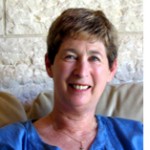By Dorothea Shefer-Vanson

MEVASSEET ZION, Israel — It came as a bit of a shock to realize that I’ve been living in or near Jerusalem for over fifty years – the best part of my life, in fact. I still love London, my birthplace, but there’s no escaping the fact that I don’t really know it any more. The residents of the suburb where I grew up have changed radically, as have its physical surroundings – the field at the back of the house, the shops in the high street and the exteriors of the houses.
Change is, I suppose, an inescapable feature of the urban experience wherever one happens to live. These days most people undertake the large part of their purchases in the shopping malls that protect them from the elements and offer every possible facility under one pleasant roof.
So it’s a rare occurrence that brings me to downtown Jerusalem nowadays. This was not the case when I first came to live in Jerusalem, even though at the time it was little more than a provincial backwater with only a few dusty shops, hardly any traffic-lights and not a single pedestrian mall. ‘Going to town’ was what young people did on a Saturday night, and that was where the few night-clubs, cinemas, cafés and eateries were situated.
Over the years, though, the place has undergone a radical transformation occasioned by both technical progress and the results of the Six Day War. The Old City now serves as a magnet for tourists and some segments of the population. Part of the famous ‘triangle’ formed by the town’s three principal thoroughfares has been pedestrianized, the Light Rail that runs down Jaffa Road has brought an eerie silence to what was once a noisy, congested route replete with polluted air and crumbling shop facades.
Because I had to leave my car in the garage for a few hours I decided to use the opportunity and visit downtown Jerusalem. Very few of the shops I remembered still existed, most of them having been tarted up and converted into fashionable cafés with lavish outdoor seating. The unkindest blow of all was to find that Shai Kong, the one shop that sold cotton garments imported from India and the Far East had disappeared. I walked up Jaffa Road looking for it and failed to find it. Only when I walked back down on the other side did I realize that the interior had been completely gutted and workmen were busy tearing it to pieces. The words ‘closing-down sale’ were still scrawled on the glass facade. Only the name of the store on the awning that had not yet been removed served to prove that it had once existed. My first thought was: where am I going to buy the cotton blouses and trousers that have served me as perfect summer pyjamas for so many years?
But trivial matters aside, whither downtown Jerusalem? None of the cinemas that were local landmarks in my younger days are left, and anyone who wants to see a film must go to one of the emporia of the cinematic industry located elsewhere in Jerusalem. Some of the market-style stores selling cheap clothes and trinkets have been replaced by more respectable chains selling garments that are neatly arranged on counters and artistically displayed in shop-fronts. But the overriding impression is that the area has become the mecca of eating and drinking, and possibly of making merry, too, for all I know. But that is something I must leave to the younger generation.
Who knows? Perhaps in another fifty years one of those individuals will find him- or herself in downtown Jerusalem and be amazed by the changes that have occurred.
*
Shefer-Vanson is an author and freelance writer based in the Jerusalem suburb of Mevasseret Zion. She may be contacted via dorothea.shefer@sdjewishworld.com